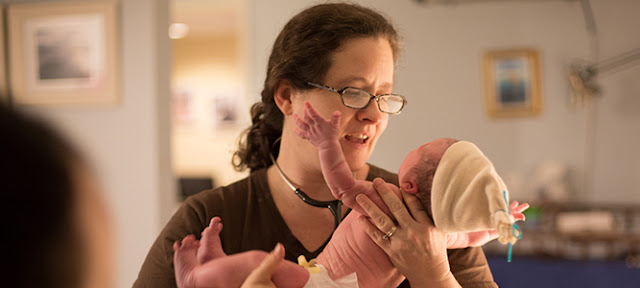Pregnancy lasts 9 calendar months, but health care providers use the concept of lunar months, which last 28 days, or 4 weeks. Thus normal pregnancy lasts approximately 10 lunar months, or 40 weeks. Health care providers also refer to early, middle, and late pregnancy as trimesters. The first trimester lasts from weeks 1 through 13; the second, from weeks 14 through 26; and the third, from weeks 27 through 40. A pregnancy is considered at term if it advances to 38 to 40 weeks. The focus of this chapter is on meeting the health needs of the expectant family over the course of pregnancy, which is known as the prenatal period.
Care Management
Prenatal care is ideally a multidisciplinary activity in which nurses work with physicians or midwives, nutritionists, social workers, and others. Collaboration among these individuals is necessary to provide holistic care. The case management model, which makes use of care maps and critical pathways, is one system that promotes comprehensive care with limited overlap in services. To emphasize the nursing role, care management here is organized around the central elements of the nursing process: assessment, nursing diagnoses, expected outcomes, plan of care and interventions, and evaluation.
Assessment and Nursing Diagnoses
Once the presence of pregnancy has been confirmed and the woman's desire to continue the pregnancy has been validated, prenatal care is begun. The assessment process begins at the initial prenatal visit and is continued throughout the pregnancy. Assessment techniques include the interview, physical examination, and laboratory tests. Because the initial visit and follow-up visits are distinctly different in content and process, they are described separately.
Physical examination. Reevaluation is a constant aspect of a pregnant woman's care. At each visit, pulse and respirations are measured; blood pressure (same arm with woman sitting) is taken; her weight is determined, and whether the weight gain (or loss) is compatible with the overall plan for weight gain is evaluated; urine may be checked by dipstick; and the presence and degree of edema are noted. Abdominal inspection and palpation are done, as well as measurement of fundal height. While assessing the pregnant woman's abdomen with the woman in the lithotomy position during the second and third trimesters, the nurse must watch for the occurrence of supine hypotension When a woman is lying in this position, the weight of abdominal contents may compress the vena cava and aorta, causing a drop in blood pressure (BP) and a feeling of faintness.
Fetal assessment. Toward the end of the first trimester, before the uterus is an abdominal organ, the fetal heart tones (FHTs) can be heard with an ultrasound fetoscope or an ultrasound stethoscope. To hear the FHTs the instrument is placed in the midline just anterior to the symphysis pubis and firm pressure applied. The woman and her family should be offered the opportunity to listen to the FHTs. The health status of the fetus is assessed at each visit for the remainder of the pregnancy.
Plan of Care and Interventions
The nurse-patient relationship is critical in setting the tone for further interaction. The clinic, home visits, or telephone conversations all provide opportunities for contact and can be used effectively for these interactions. Sometimes women repeatedly seek information about a particular problem. At other times, there may be another underlying problem the woman is hesitant to discuss. The nurse needs to be astute in identifying such unvoiced needs and can help the woman by asking for a patient-generated solution and a subsequent report of its effectiveness.
Care Paths
Because a large number of health care professionals are involved in care of the expectant mother, unintentional gaps or overlaps in care may occur. Care paths are used to improve the consistency of care and reduce costs (Simon, Heaps, & Chodroff, 1997). Use of care paths may contribute to improved satisfaction of families with the prenatal care that is provided, and members of the health care team may function more efficiently and effectively





